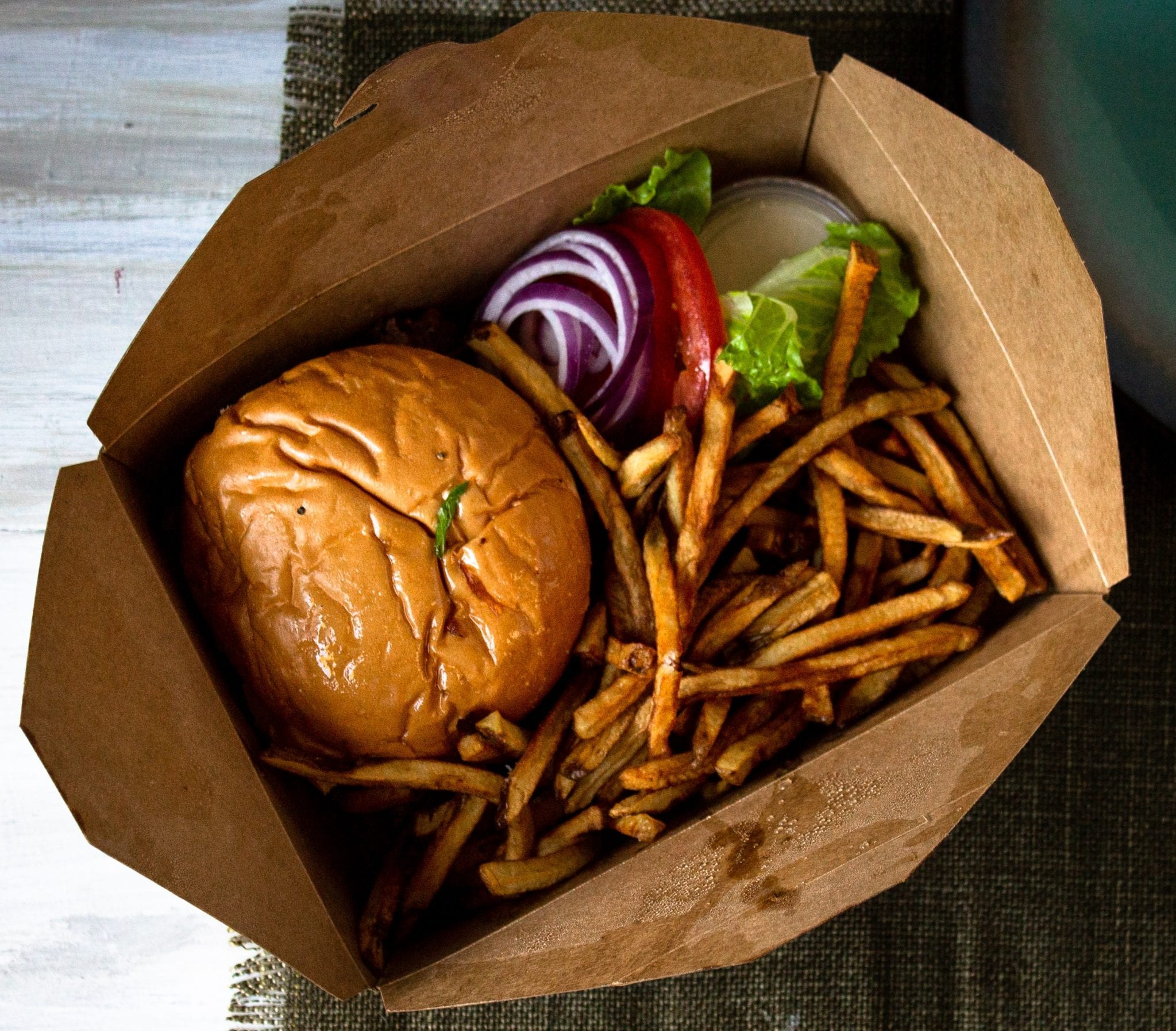
Seattle’s Restaurant Week is back and will be running the entire month of April, 2021. If you’re planning on participating by ordering from one of your local favorites or trying a new cuisine and find yourself acquiring takeout containers, leftovers, and confusing carryout biproducts (how many soy sauce packets do you REALLY need?) and have questions about where it all goes, SPU has a helpful guide ready for you.

Carryout Containers
Thanks to Seattle law designed to stop the waste of single-use food service ware, you’ll find that many of your carryout containers are either compostable or recyclable. Taking a few moments and ensuring you’re correctly composting and recycling right is key to maximizing the potential repurposing of these materials.
Recycling (all items should be empty, clean, & dry)
- Paper plates
- Paper cups
- Plastic cups & lids
- Plastic tubs and lids, 3 inches in diameter or more
- Paper or cardboard food containers or boxes (including oyster pails / aka Chinese food carry out boxes)
Food & Yard Waste
- Paper plates and trays that are not shiny (soiled)
- Paper or cardboard food containers that are labeled “compostable” (soiled)
- Pizza boxes (clean or food soiled)
Garbage
- Plastic or paper carryout containers that are not cleaned, emptied, or dry
- All Styrofoam carryout containers (soiled or clean)
Bags
Whenever possible, ask for carryout items to be placed in a paper bag or better yet, ask if you can bring your own.
Recycling (all items should be empty, clean, & dry)
- Paper bags
Food & Yard Waste
- Paper bags that are food soiled
Garbage
- Plastic bags and film that are food soiled
Other
- Plastic bags and film that are clean and dry can be dropped off to a participating recycle center but should NOT be placed in your curbside carts.
Other Carryout Waste
Food packaging, including napkins and utensils, make up a large component of the waste cycle. The more you can cut these items out of your order, the less waste you’ll contribute. Whenever possible, try to opt out of those extra forks, knives, spoons, napkins, and sauce and condiment packets. If you do need to include these items in your order, know where they go when you’re finished using them.
Recycling (all items should be empty, clean, & dry)
- Paper receipts
- Plastic sauce cups and containers that are 3 inches in diameter or larger
Food & Yard Waste
- Any leftover food scraps
- Utensils and straws labeled “compostable”
- Paper napkins & paper towels that are soiled with food or grease
- Wooden chopsticks
- Toothpicks or wooden spears (remove any plastic)
- Uncoated (not shiny) paper food wrapping
Garbage
- Plastic sauce cups and containers that are less than 3 inches in diameter (full or empty)
- Shiny or plastic coated food packaging or wrapping
- Plastic noncompostable straws
- Individual sauce & condiment packets (full or empty)
- Plastic utensils (soiled or clean)
Helpful Links & Resources
Whether you’re looking to support local restaurants or just looking for a reason not to have to cook, what you do with the products that come with your carryout order does matter. For additional help and resources, see our links below.

- Download your own handy Where Does It Go sortation guide here.
- When in doubt, find out! Using our Where Does It Go Tool is an easy way to find out where a confusing item should go.
- Make your smartphone even smarter with the Recycling It app. SPU customers can access information about their recycling, compost, and garbage services including getting answers to common recycling questions.
- Shop Your Values! Consider supporting a local Seattle Green Business. You can find a listing of area restaurant EnviroStars here.